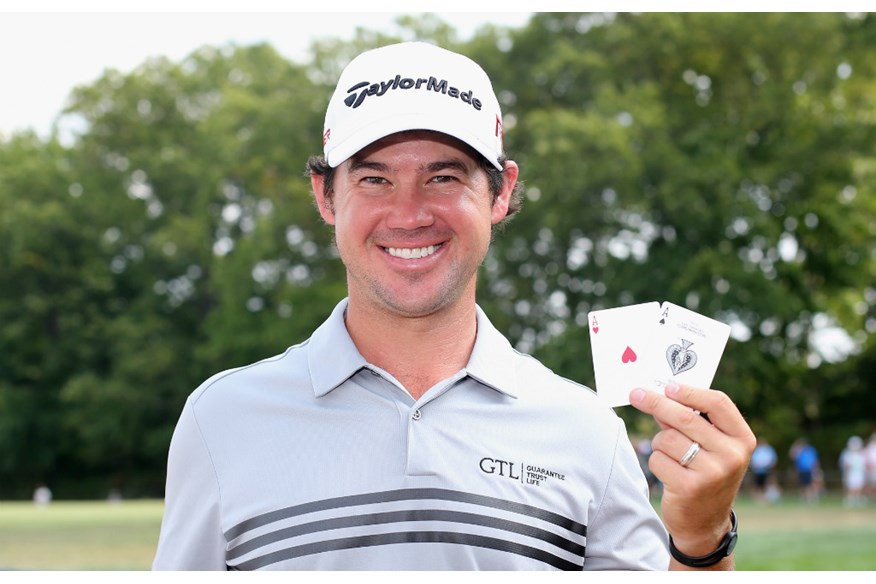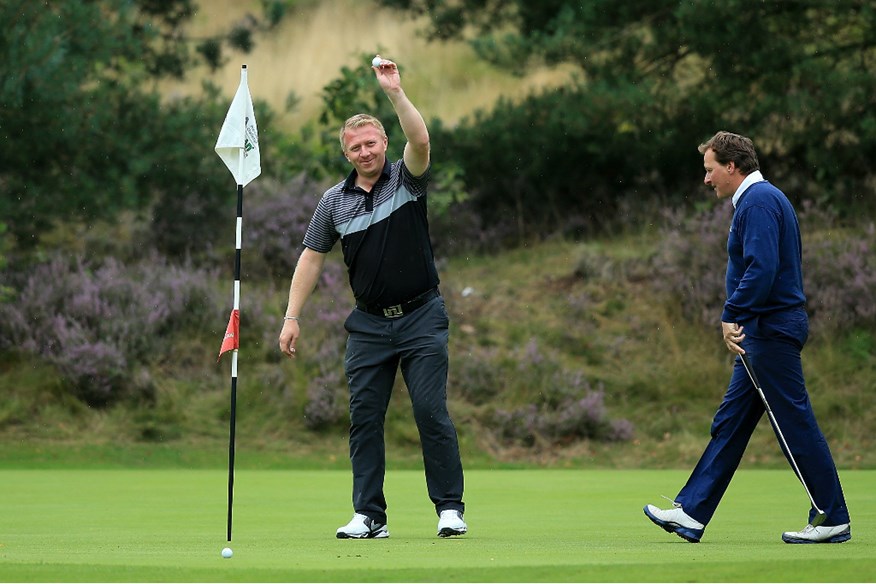Want to know how to get a hole-in-one?
Published:
There’s something very special about a hole-in-one. It’s a pure example of the perfect shot. It doesn’t really matter whether you thin a 9-iron that would have shot off the back off the green but happened to hammer against the flag and drop in, or whether you hit a soaring 7-iron that pitches just past the hole and spins back into the cup like something off the telly. However you do it, if you get your ball from the tee into the hole in one shot, there’s not a player in the world who could have beaten you on that hole.
Some players – even great players – go their whole lives without one, while some complete beginners can rack up several. If you’re still waiting for your first ace, take solace in some of these statistics courtesy of the NationalHoleInOneRegistry…
The average wait is 24 years
You’ve been playing for years without a sniff of an ace and then your mate turns up to try golf for the first time and cans one like it’s nothing. There’s nothing more annoying, but rest assured that he’s the outlier, not you. On average, golfers play the game for 24 years before making an ace. If you’ve been playing longer than that and still haven’t had one, just assume that yours is long overdue and you’ll probably bag a couple in quick succession.
Aces are not a young man’s game
The average age of a golfer making a hole-in-one is 55. 25% of aces are made by 50-59 year olds, and 24% are made by 40-49 year olds. 60% of all aces are made by golfers 50 or over.
Your course will only see a handful each year
If you even witness an ace at your home club you should count yourself lucky. Most courses will only see 10-15 aces each year.
The odds of making a hole-in-one
As we said at the start, a hole-in-one can be made by a complete beginner, and many top players never get one. That said, an ace obviously becomes more likely the better you are.
The odds of a tour pro making an ace are 3,000/1.
The odds of a low handicapper making an ace are 5,000/1.
The odds of an average golfer making an ace are 12,000/1.
Take comfort in the fact that you don’t have to be a scratch golfer to get a hole-in-one. 57% of aces are made by mid-handicappers playing off 10-19. The average handicap of a golfer making a hole-in-one is 14.
When one ace isn’t enough, why not get two in the same round?

The odds of making two aces in one round is 67,000,000/1, so it’s a bit of a longshot. In fact, you’re more likely to win the jackpot on the National Lottery than record two aces in one round. That didn’t stop Brian Harman doing it during the final round of The Barclays in 2015, though. Harman became the third player in PGA Tour history to achieve the feat, following Yusaku Miyazato at the 2006 Reno Tahoe Open and Bill Whedon at the 1955 Insurance City Open.
What’s the best club to use to get a hole-in-one?
You’d think that the shorter the par-3, the greater the chance of getting a hole-in-one, meaning that more would be made with wedges than anything else. The stats suggest otherwise and, in fact, the 7-iron and 8-iron make more aces than any other club, each registering 14% of all aces. 40% of all aces are made with a 7-iron, 8-iron or 9-iron. The stats suggest that you’re more likely to get a hole-in-one with a 5-iron in your hand than a pitching wedge. A pitching wedge is responsible for just 7% of all aces, compared to 8% for a 5-iron and 11% for a 6-iron.
So, what’s the best way to make a hole-in-one?
Play off 14, use a 7-iron, wait 24 years and tee it up on your 55th birthday. Just don’t expect to make two aces in the same round…


